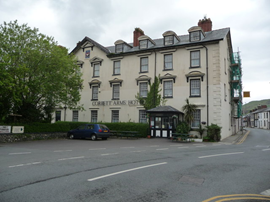Certificate of Lawfulness of Proposed Works
A Certificate of Lawfulness of Proposed Works is a document that is issued to confirm that proposed works to a listed building do not contravene section 38 of the Planning (Listed buildings and conservation areas) Act 1990. This means that any works of alteration or extension (but not demolition) of a listed building do not need listed building consent, as the character of the building is not affected.
Certificates can only be issued for works which have yet to be commenced and cannot be issued retrospectively for works already done. When a certificate is issued, works must be carried out within ten years.
If someone is satisfied that the works they wish to carry out do not require listed building consent then they can proceed without submitting a certificate application to their local planning authority, since there is no obligation to apply for one. The application process, as well as procedures for appeals against refusal or non-determination, are covered in the Planning (Listed Buildings) (Certificates of Lawfulness of Proposed Works) Regulations 2014.
It is the responsibility of the certificate applicant to supply appropriate evidence demonstrating that the works that are proposed do not require listed building consent. The local planning authority may refuse the application if they have reasonable grounds to believe otherwise. An application should contain the following information:
- A detailed description of the proposed works (including details about the materials, finishes, and so on).
- Details about the part/s of the building affected.
- Reasons why the certificate is necessary (i.e. why the works do not affect the character of the listed building).
- The applicant’s interest in the building (i.e. ownership, tenancy, etc.).
- Details of the listed building’s grading.
[edit] Related articles on Designing Buildings Wiki
- Building Preservation Notice.
- Certificate of Immunity.
- Certificates in the construction industry.
- Conservation area consent.
- Enterprise and Regulatory Reform Act 2013 and listed buildings.
- Lawful development certificate.
- Listed buildings.
- Local interest list.
- Planning (Listed Buildings and Conservation Areas) Act.
- Planning permission.
IHBC NewsBlog
Images from inside a Grade II listed hotel show the scale of its collapse
The Corbett Arms in Tywyn has fallen into serious disrepair.
Old Sarum fire in listed (& disputed) WW1 Hangar - Wiltshire Council has sought legal advice after fire engulfed a listed First World War hangar that was embroiled in a lengthy planning dispute.
UK Antarctic Heritage Trust launches ‘Virtual Visit’ website area
The Trust calls on people to 'Immerse yourself in our heritage – Making Antarctica Accessible'
Southend Council pledge to force Kursaal owners to maintain building
The Council has pledged to use ‘every tool in the toolbox’ if urgent repairs are not carried out.
HE’s Research Magazine publishes a major study of the heritage of England’s suburbs
The article traces the long evolution of an internal programme to research 200 years of suburban growth
IHBC Context 183 Wellbeing and Heritage published
The issue explores issues at the intersection of heritage and wellbeing.
SAVE celebrates 50 years of campaigning 1975-2025
SAVE Britain’s Heritage has announced events across the country to celebrate bringing new life to remarkable buildings.
IHBC Annual School 2025 - Shrewsbury 12-14 June
Themed Heritage in Context – Value: Plan: Change, join in-person or online.
200th Anniversary Celebration of the Modern Railway Planned
The Stockton & Darlington Railway opened on September 27, 1825.
Competence Framework Launched for Sustainability in the Built Environment
The Construction Industry Council (CIC) and the Edge have jointly published the framework.













